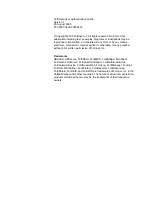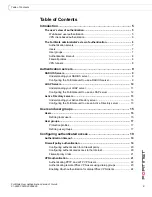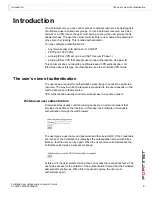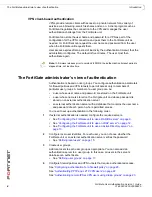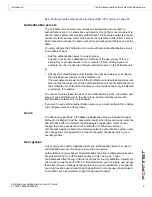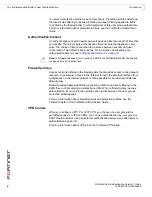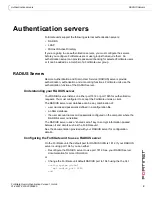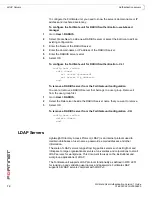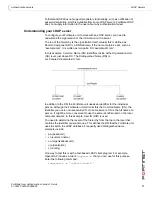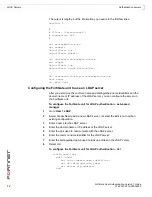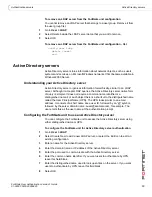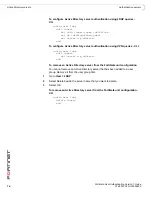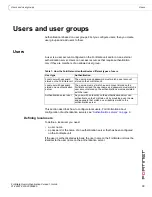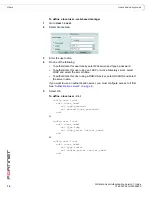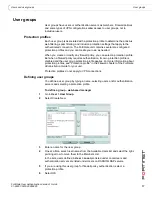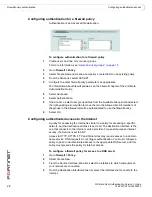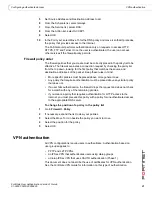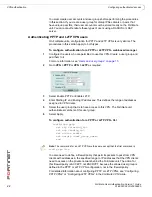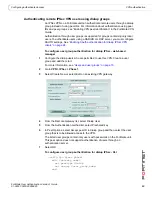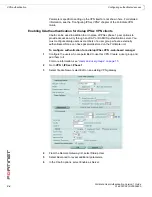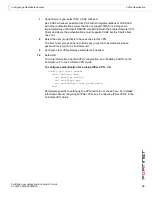
Authentication servers
Active Directory servers
FortiGate User Authentication Version 1 Guide
01-28007-0233-20050825
13
To remove an LDAP server from the FortiGate unit configuration
You cannot remove an LDAP server that belongs to a user group. Remove it from
the user group first.
1
Go to
User > LDAP
.
2
Select Delete beside the LDAP server name that you want to remove.
3
Select OK.
To remove an LDAP server from the FortiGate unit configuration - CLI
config user ldap
delete <name>
end
Active Directory servers
Active Directory server stores information about network objects, such as users,
systems and services, on Microsoft Windows networks. It first became available in
Windows 2000 Server.
Understanding your Active Directory server
Active Directory server organizes information hierarchically, similar to an LDAP
server. Although it accepts LDAP queries, the Active Directory server native form
of query is simpler. It does not require a common name identifier or a
distinguished name. For each object there is a shortcut to the distinguished name
called the User Principal Name (UPN). The UPN looks similar to an email
address. It consists of a short name like a user ID, followed by an “@” symbol,
followed by the server domain name: [email protected], for example. The
user enters this as the user name at the authentication prompt.
Configuring the FortiGate unit to use an Active Directory server
You can configure the FortiGate unit to access the Active Directory server using
either distinguished name or UPN.
To configure the FortiGate unit for Active Directory server authentication
1
Go to
User > LDAP
.
2
Select Create New to add a new LDAP server, or select the Edit icon to edit an
existing configuration.
3
Enter a name for the Active Directory server.
4
Enter the domain name or IP address of the Active Directory server.
5
Enter the port used to communicate with the Active Directory server.
6
Enter the common name identifier. If you want users to authenticate by UPN,
leave this field blank.
7
Enter the distinguished name used to look up entries on the server. If you want
users to authenticate by UPN, leave this field blank.
8
Select OK.


